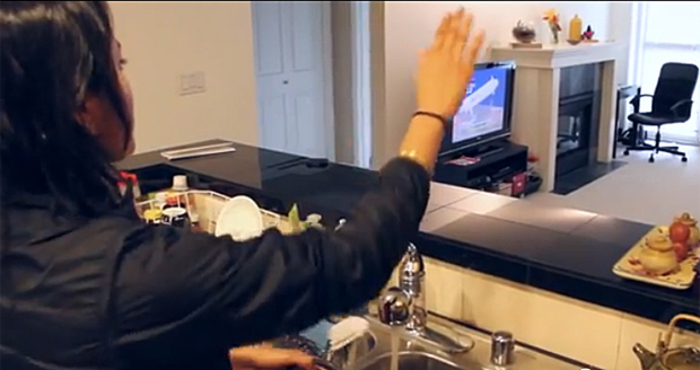Don't like the song playing on the stereo? Just wave it goodbye, literally.
That's the vision of a team of researchers at the University of Washington's Networks Lab, who are developing a new gesture recognition technology called "WiSee," based on detecting tiny variations in Wi-Fi signals.
The technology is designed to recognize changes in the frequency of wireless signals that occur when a person moves. Known as the Doppler frequency shift, the changes could be recognized by an adapted Wi-Fi router that could be programmed to understand that a certain gesture, like a wave of the hand or a push of the arms, would correspond to a specific device.
WiSee, its developers claim, constitutes the first whole-home gesture recognition system using wireless signals.
Gesture-based technology is not exactly a new concept. Microsoft's XBox Kinect, for instance, uses cameras to recognize gestures, and the technology has been popularized in recent years in major Hollywood movies such as "Iron Man" and "Minority Report."

A hand gesture changes the TV channel using WiSee's technology.
But the UW researchers' work stands out, they say, because Wi-Fi signals can travel through walls and are not bound by line-of-sight or sound restrictions. So the idea is that as long as there is a wireless device somewhere nearby, users could control their electronics and household appliances from any room in the home, without needing sensors or cameras.
"Any wireless device will be able to reflect those signals back to a main receiver," said Qifan Pu, one of the lab's researchers.
The technology has shown promise. Researchers have developed a prototype of a "smart" receiver that can listen to all of the wireless transmissions throughout the home such as smartphones, laptops and tablets, and currently can identify nine different whole-body gestures like pushing, pulling and punching.
The gestures were tested among five users in a two-bedroom apartment and inside an office; WiSee accurately classified 94 percent of 900 gestures performed, researchers said.
Refinements still need to be made to the technology so that more subtle gestures, like motions just of the hand or even finger movements, can be detected.
Some experts in the technology industry see gesture-based recognition as the next revolution in how people interact with devices, with many smartphones and tablets today removing physical buttons and instead letting people swipe through menus and functions.
But commercialization of the WiSee technology, which has been in development for only about six months, is still a ways off, researchers said. Making the technology affordable to consumers notwithstanding, one major obstacle still to be tackled is security, Pu said.
Preventing outside access to a person's electronic devices is one scenario that needs to be addressed, Pu said. To do that, one approach might be to apply a gestural password concept to the device, so a person would have to perform a specific repetition gesture to access the receiver, researchers said.
But for sheer entertainment value, perhaps cameras would come in handy here, to record intruders' botched attempts at guessing a gestural password.





